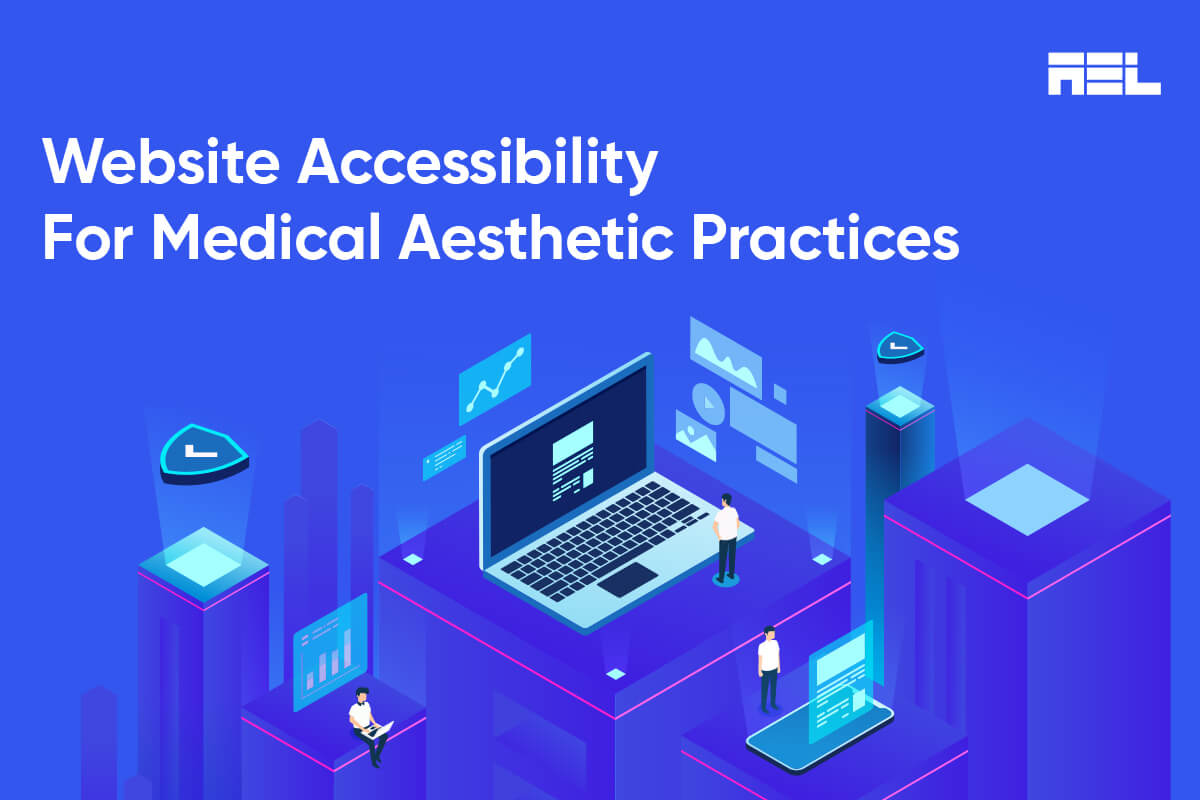Medical aesthetic practices are a branch of modern medicine that enhances cosmetic appearance by treating conditions like scars, wrinkles, etc. Highly skilled and trained individuals perform these treatments, which require attention to detail. Therefore, having an inclusive website will greatly benefit organizations that deal with these practices. In this article, we will go through the basics of website accessibility and its impact to ensure our readers have a clear understanding of an inclusive website for Medical aesthetic practices.
Table of Contents
- 1 Legal and Ethical Considerations
- 2 Key Accessibility Considerations for Medical Aesthetic Websites
- 3 Incorporating Accessible Content and Features
- 4 Educating Staff and Promoting Awareness
- 5 Overcoming Challenges and Addressing Common Concerns
- 6 The Future of Website Accessibility for Medical Aesthetic Practices
Legal and Ethical Considerations
Many guidelines or laws, such as the ADA, WCAG, EN 301 549, etc., in various countries, stipulate that websites be easily accessible to users with disabilities. Furthermore, non-accessible websites are a beacon of lawsuits and monetary sanctions and also harm their reputation.
Medical aesthetic practices must place importance on webpage navigability as a moral obligation. This shows their loyalty to inclusion, diversity, and equality. By making their online platforms accessible, aesthetic centers exhibit their compassion for every client. Studies indicate it can be accessed to improve reliance and application among individuals who are disabled.
Key Accessibility Considerations for Medical Aesthetic Websites
Some of the key accessibility considerations are:
1. Alternate Ways to Convey Information
Captions and transcripts for multimedia content, such as videos or podcasts. Provide alt-text for images and options to adjust or disable animations or sounds that may cause distraction or discomfort.
2. Sufficient Contrast
Maintain adequate contrast between text and background colors.
3. Organized Content
Table of Contents (TOC), Headings, lists, and tables to structure and organize content. Also, provide descriptive and meaningful links and labels.
4. Smooth Navigation
Clear and consistent navigation and menus. Also, skip links and landmarks to help users jump to different page sections.
5. Alternate Ways to Navigate Websites
Keyboard access and focus indicators for all interactive elements. Furthermore, provide resizable text and zoom options for users who need larger fonts or magnification.
Incorporating Accessible Content and Features
To incorporate accessible content and features into their websites, medical aesthetic practices need to:
- Choosing a content management system (CMS): A CMS that supports accessibility, such as WordPress or Magento. They provide features and plugins to help create and maintain accessible websites.
- Request feedback from individuals with disabilities: Implement changes based on feedback from people with impairments. This will aid in identifying and dealing with their requirements and obstacles. You can do this by researching, experimenting, and gathering input from those with diverse disabilities. Moreover, it is crucial to include people who utilize assistive equipment in these gatherings.
- Use software to check the overall accessibility of the website. Incorporate a tool that can scan the website for accessibility issues, provide detailed reports and recommendations, and monitor the website’s performance over time.
Educating Staff and Promoting Awareness
Ensure staff understand accessibility and its importance through study material and training.
- Provide resources and proper training for the staff so that they can create and maintain accessible content. This includes webinars, workshops, guides, checklists, and best practices.
- Establish policies and procedures for ensuring website accessibility compliance. This can include assigning roles and responsibilities, setting deadlines and goals, and conducting regular audits and reviews.
- Encourage a culture of accessibility within the organization. This can include celebrating successes, sharing stories, inviting feedback, and rewarding efforts.
Overcoming Challenges and Addressing Common Concerns
Despite the advantages of website accessibility, it does come with some caveats. Some of them are:
- Cost: Website accessibility is an investment that can increase customer satisfaction, loyalty, retention, and revenue. However, it has huge benefits. You can understand it by studying a business case for accessibility.
- Complexity: Website accessibility can be complex, but tools and resources like the WCAG offer clear guidelines and comprehensive information about accessibility that makes it easy to understand the process. Experts and consultants can also provide guidance and support for website accessibility projects.
The Future of Website Accessibility for Medical Aesthetic Practices
Medical aesthetic practices must keep up with future trends and innovations affecting website accessibility. Some of them are:
- Artificial intelligence (AI) and automation: AI and automation enhance website accessibility through features like automatic captioning, transcription, translation, voice control, and image recognition.
- Internet of Things (IoT) and wearable devices: IoT and wearable devices enable accessible online information for disabled individuals but also present challenges like compatibility, security, privacy, and usability. Medical aesthetic practices must adapt websites to accommodate diverse devices and user preferences.
- Virtual reality (VR) and augmented reality (AR): VR and AR provide immersive experiences for disabled individuals, but they also present challenges like motion sickness, disorientation, and accessibility issues. These practices must ensure inclusive content and offer alternative options for those who cannot use VR or AR.
Organizations must keep in mind that futuristic technologies are not perfect, yet. It presents challenges like accuracy, reliability, bias, and ethics. Therefore, organizations must use these technologies cautiously with human oversight and comply with accessibility standards and principles.
Conclusion
Website accessibility is crucial for medical aesthetic practices to meet legal and ethical obligations, improve brand image, and gain a competitive edge. To achieve accessibility, these practices must follow WCAG guidelines to incorporate accessible content. The best way to approach this is to educate staff, promote awareness, overcome common challenges, and stay updated with future trends and innovations. We hope you now have a firm grasp of how accessibility impacts medical aesthetic practices. If you need assistance with accessibility services, please get in touch with us at info@aeldata.com.



